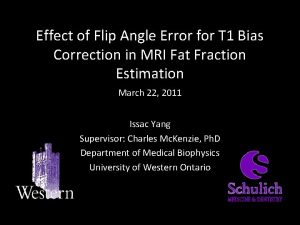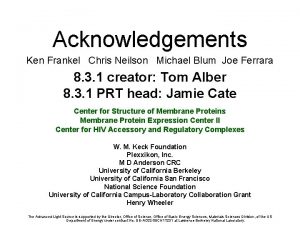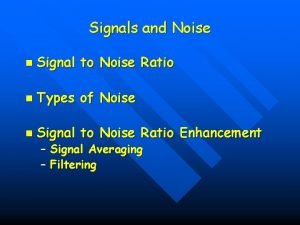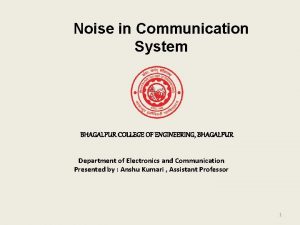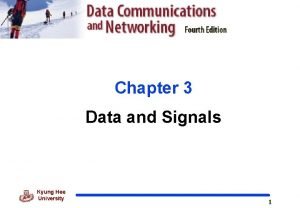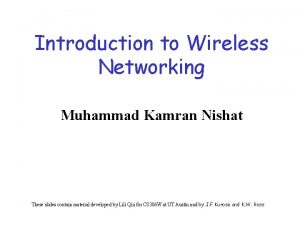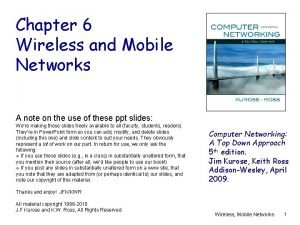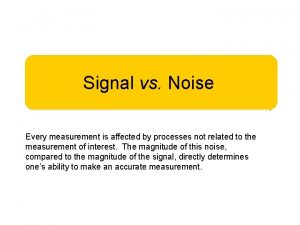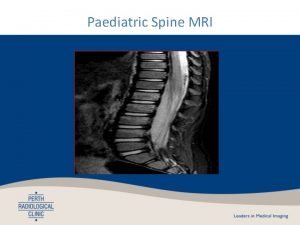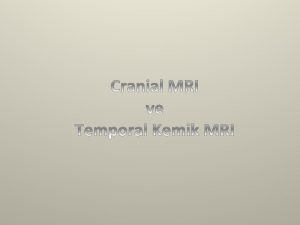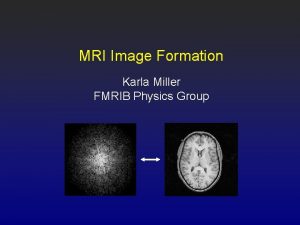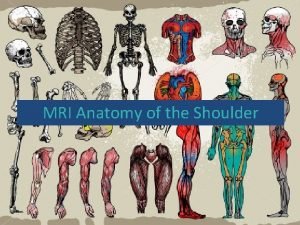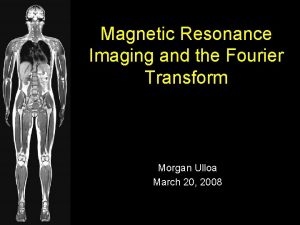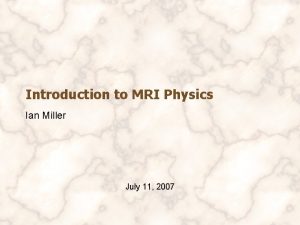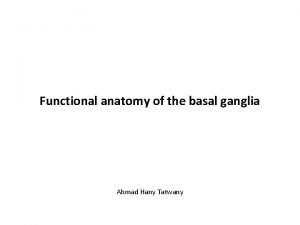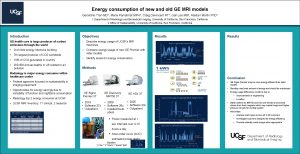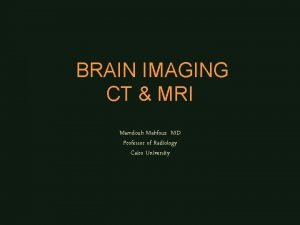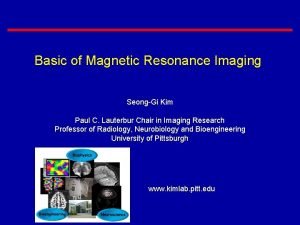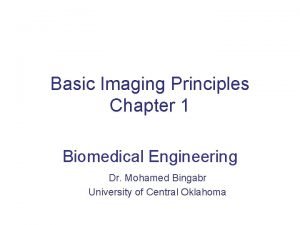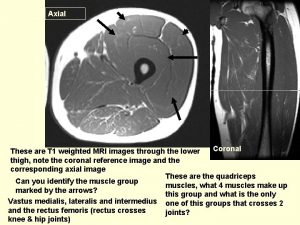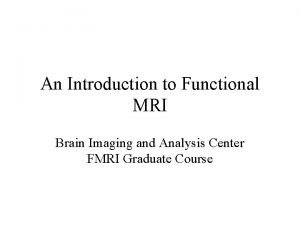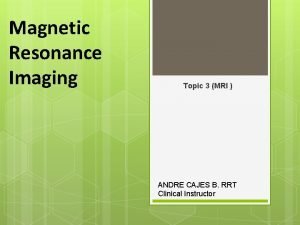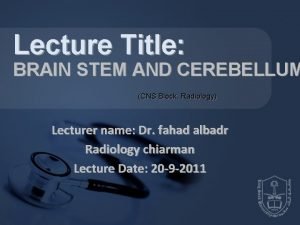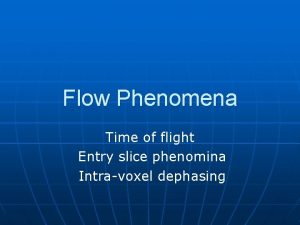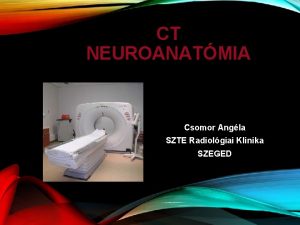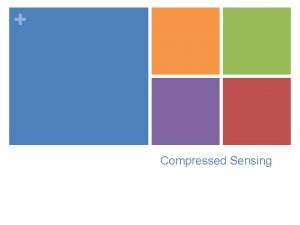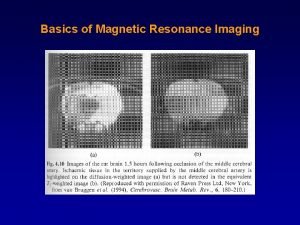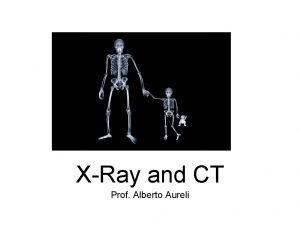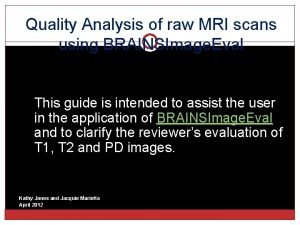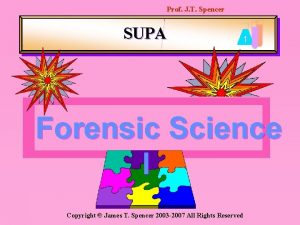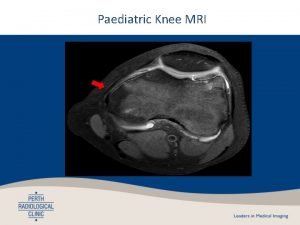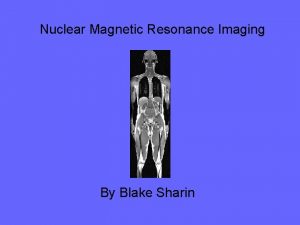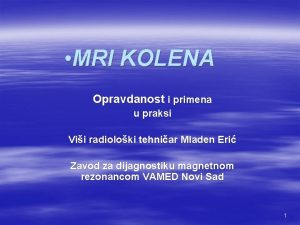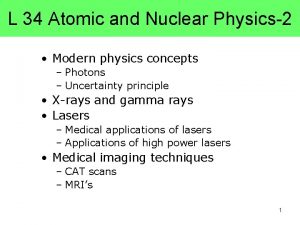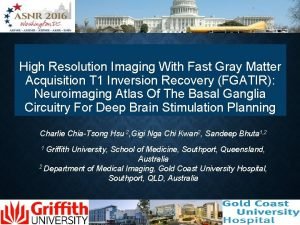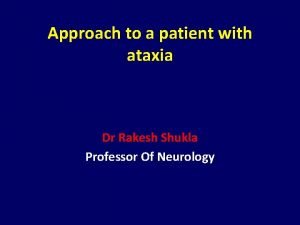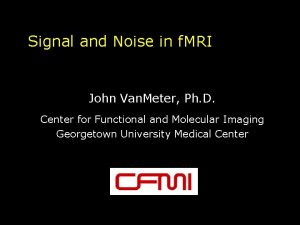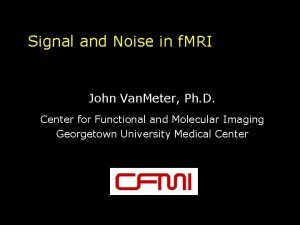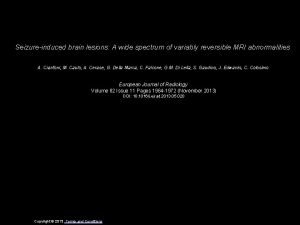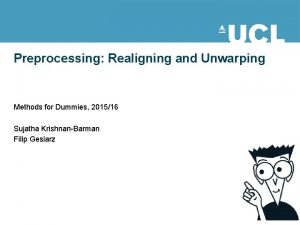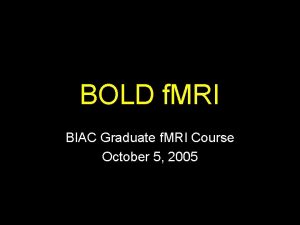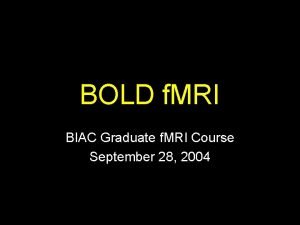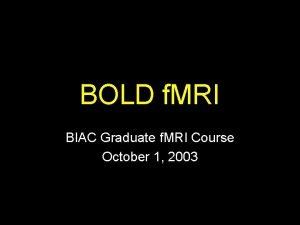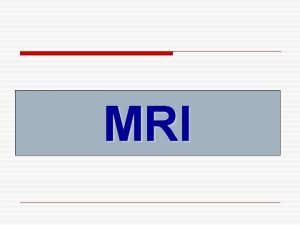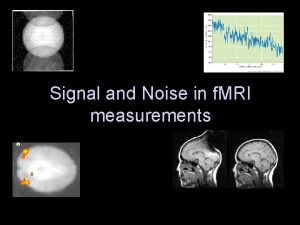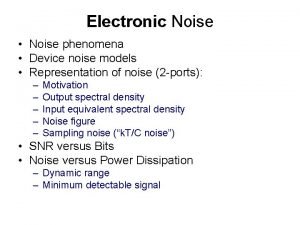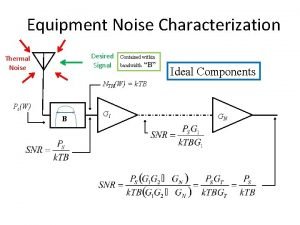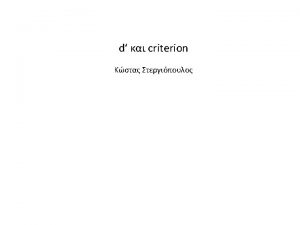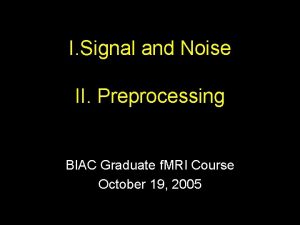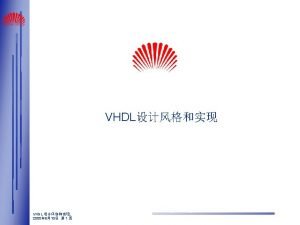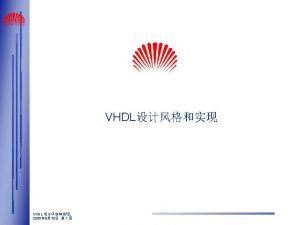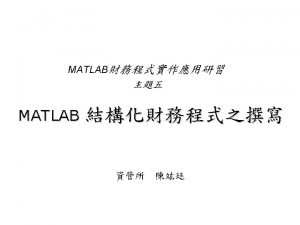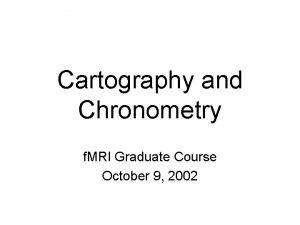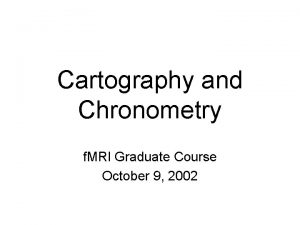Signal and Noise in f MRI Graduate Course

































































- Slides: 65

Signal and Noise in f. MRI Graduate Course October 16, 2002

What is signal? What is noise? • Signal, literally defined – Amount of current in receiver coil • What can we control? – – Scanner properties (e. g. , field strength) Experimental task timing Subject compliance (through training) Head motion (to some degree) • What can’t we control? – – Scanner-related noise Physiologic variation (e. g. , heart rate) Some head motion Differences across subjects

Signal, noise, and the General Linear Model Amplitude (solve for) Measured Data Noise Design Model Cf. Boynton et al. , 1996

Signal-Noise-Ratio (SNR) Task-Related Variability Non-task-related Variability



Effects of SNR: Simulation Data • Hemodynamic response – Unit amplitude – Flat prestimulus baseline • Gaussian Noise – Temporally uncorrelated (white) – Noise assumed to be constant over epoch • SNR varied across simulations – Max: 2. 0, Min: 0. 125

SNR = 2. 0

SNR = 1. 0

SNR = 0. 5

SNR = 0. 25

SNR = 0. 125

What are typical SNRs for f. MRI data? • Signal amplitude – MR units: 5 -10 units (baseline: ~700) – Percent signal change: 0. 5 -2% • Noise amplitude – MR units: 10 -50 – Percent signal change: 0. 5 -5% • SNR range – Total range: 0. 1 to 4. 0 – Typical: 0. 2 – 0. 5

Is noise constant through time?


Is f. MRI noise Gaussian (over time)?

Is Signal Gaussian (over voxels)?

What does this mean for f. MRI experiments?

Trial Averaging • Static signal, variable noise – Assumes that the MR data recorded on each trial are composed of a signal + (random) noise • Effects of averaging – Signal is present on every trial, so it remains constant through averaging – Noise randomly varies across trials, so it decreases with averaging – Thus, SNR increases with averaging


Example of Trial Averaging Average of 16 trials with SNR = 0. 6


Fundamental Rule of SNR For Gaussian noise, experimental power increases with the square root of the number of observations

Increasing Power increases Spatial Extent Trials Averaged 500 ms 4 500 ms … 16 36 16 -20 s 64 100 144 Subject 1 Subject 2

Effects of Signal-Noise Ratio on extent of activation: Empirical Data Number of Significant Voxels Subject 1 Subject 2 VN = Vmax[1 - e(-0. 016 * N)] Number of Trials Averaged

Active Voxel Simulation Signal + Noise (SNR = 1. 0) 1000 Voxels, 100 Active Noise • Signal waveform taken from observed data. • Signal amplitude distribution: Gamma (observed). • Assumed Gaussian white noise.

Number of Activated Voxels Effects of Signal-Noise Ratio on extent of activation: Simulation Data SNR = 1. 00 SNR = 0. 52 (Young) SNR = 0. 35 (Old) SNR = 0. 25 SNR = 0. 10 Number of Trials Averaged

Subject Averaging

Variability Across Subjects D’Esposito et al. , 1999

Young Adults

Elderly Adults



Implications of Inter-Subject Variability • Use of individual subject’s hemodynamic responses – Corrects for differences in latency/shape • Suggests iterative HDR analysis – Initial analyses use canonical HDR – Functional ROIs drawn, interrogated for new HDR – Repeat until convergence • Requires appropriate statistical measures – Random effects analyses – Use statistical tests across subjects as dependent measure (rather than averaged data)

Effects of Suboptimal Sampling

Visual HDR sampled with a 1 -sec TR

Visual HDR sampled with a 2 -sec TR

Visual HDR sampled with a 3 -sec TR

Comparison of Visual HDR sampled with 1, 2, and 3 -sec TR

Visual HDRs with 10% diff sampled with a 1 -sec TR

Visual HDR with 10% diff sampled with a 3 -sec TR

Partial Volume Effects

Partial Volume Effects

Partial Volume Effects

Partial Volume Effects

Partial Volume Effects

Where are partial volume effects most problematic? • Ventricles • Grey / white boundary • Blood vessels

Activation Profiles Gray / White Ventricle Gray / White Matter Ventricle

Sources of Noise

What causes variation in MR signal? • • • Field strength Excitation vs. Inhibition Large vessel effects Differences across the brain Timing of cognitive processes

Excitation vs. Inhibition M 1 SMA Waldvogel, et al. , 2000

Types of Noise • Thermal noise – Responsible for variation in background – Eddy currents, scanner heating • Power fluctuations – Typically caused by scanner problems • • Variation in subject cognition Head motion effects Physiological changes Artifact-induced problems

Standard Deviation Image

Low Frequency Noise

High Frequency Noise

Filtering Approaches • Identify unwanted frequency variation – Drift (low-frequency) – Physiology (high-frequency) – Task overlap (high-frequency) • Reduce power around those frequencies through application of filters • Potential problem: removal of frequencies composing response of interest

Variability in Subject Behavior: Issues • Cognitive processes are not static – May take time to engage – Often variable across trials – Subjects’ attention/arousal wax and wane • Subjects adopt different strategies – Feedback- or sequence-based – Problem-solving methods • Subjects engage in non-task cognition – Non-task periods do not have the absence of thinking What can we do about these problems?

Physiology • Head Motion • Respiration – Motion – Shadowing • Heart Rate

Motion Effects • Motion within an image acquisition – Results in blurring – Especially noticeable in 3 D high-res images • Motion across acquisitions – More of a problem for f. MRI • Significant if ½ voxel or greater (>2 mm) • Increases with subject fatigue • Potential confound for subject studies – Minimized through use of restraints • Padding, vacuum pack (BIAC) • Head masks, bite bars/mouthpieces, etc. (other centers) • Tape indicators – Usually corrected in preprocessing

Head Motion Effects

Head Motion: Good and Bad

Image Artifacts



Caveats • Signal averaging is based on assumptions – Data = signal + temporally invariant noise – Noise is uncorrelated over time • If assumptions are violated, then averaging ignores potentially valuable information – Amount of noise varies over time – Some noise is temporally correlated (physiology) • Nevertheless, averaging provides robust, reliable method for determining brain activity
 Fat signal mri
Fat signal mri The noise that affects pcm
The noise that affects pcm Frankel signal to noise
Frankel signal to noise Signal to noise ratio
Signal to noise ratio Noise is added to a signal in a communication system *
Noise is added to a signal in a communication system * Signal to noise ratio
Signal to noise ratio Kamran nishat
Kamran nishat Snr signal to noise ratio
Snr signal to noise ratio Snr signal to noise ratio
Snr signal to noise ratio Signal vs noise
Signal vs noise Baseband signal and bandpass signal
Baseband signal and bandpass signal Baseband signal and bandpass signal
Baseband signal and bandpass signal Classification of signal
Classification of signal Digital signal as a composite analog signal
Digital signal as a composite analog signal Course title and course number
Course title and course number Sailor course brick
Sailor course brick Chaine parallèle muscle
Chaine parallèle muscle Mris_preproc
Mris_preproc Mri gp indications
Mri gp indications Mıknatıslı septum
Mıknatıslı septum Mri image formation
Mri image formation Buford complex
Buford complex How mri works
How mri works Mri hydrogen atoms
Mri hydrogen atoms Fourier transform mri
Fourier transform mri Translate
Translate Safetymri
Safetymri Capsula interna anatomy
Capsula interna anatomy Geraldine tran
Geraldine tran Haghighat mri center
Haghighat mri center Valuenomics
Valuenomics Pregnancy mri
Pregnancy mri Amegdala
Amegdala First mri image 1973
First mri image 1973 Mri hydrogen atoms
Mri hydrogen atoms Gracilis muscle mri
Gracilis muscle mri Mri ap psychology
Mri ap psychology Lauterbur
Lauterbur Vertical mri
Vertical mri Pons radiology
Pons radiology Entry slice phenomenon
Entry slice phenomenon Szeged klinika mri vizsgálat
Szeged klinika mri vizsgálat Mri k space
Mri k space Brainstem ct anatomy
Brainstem ct anatomy Angular momentum mri
Angular momentum mri Atri clip
Atri clip Mri scanner
Mri scanner Truncation artifact
Truncation artifact Mri scanner
Mri scanner Mri knee medicare
Mri knee medicare Disadvantage of mri
Disadvantage of mri Nmr kolena
Nmr kolena Mri scanner
Mri scanner Fgatir ge mri
Fgatir ge mri Mri question
Mri question Siemens mri safety video
Siemens mri safety video Cerebellopontine
Cerebellopontine Bajcsy kórház mr
Bajcsy kórház mr Nsf mri
Nsf mri Hemorrhagic transformation mri
Hemorrhagic transformation mri Cnr mri
Cnr mri Cnr mri
Cnr mri Mri brain
Mri brain Mri safety signage
Mri safety signage Mri position
Mri position Coherent scattering
Coherent scattering
